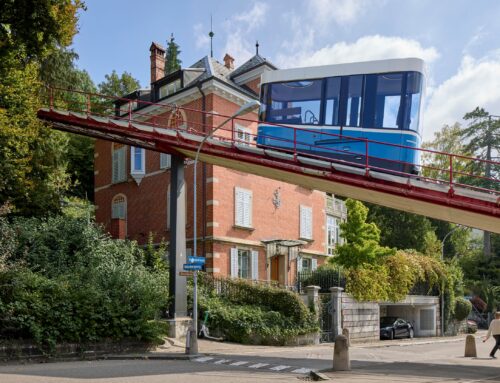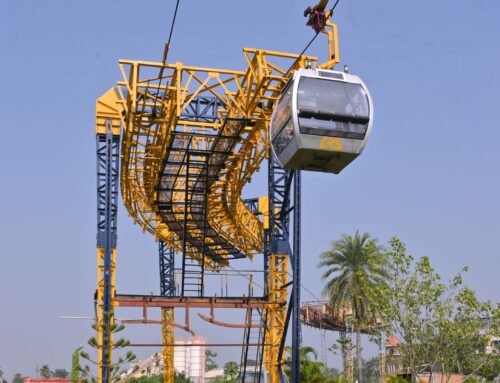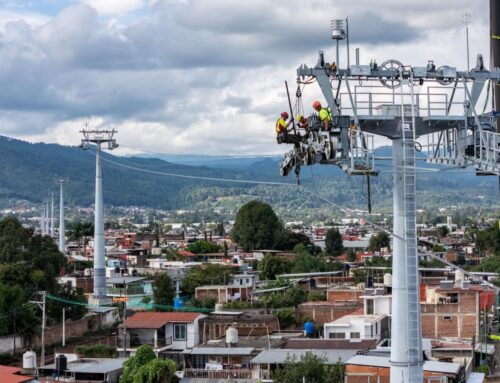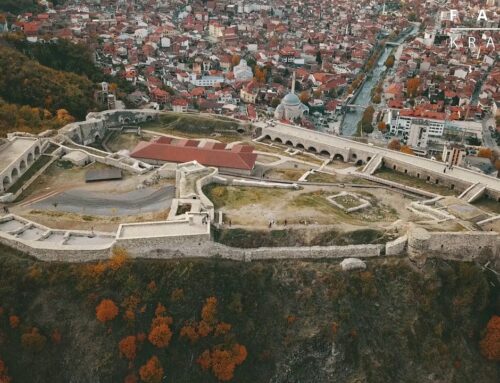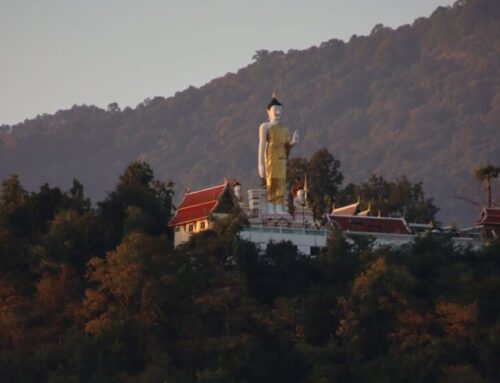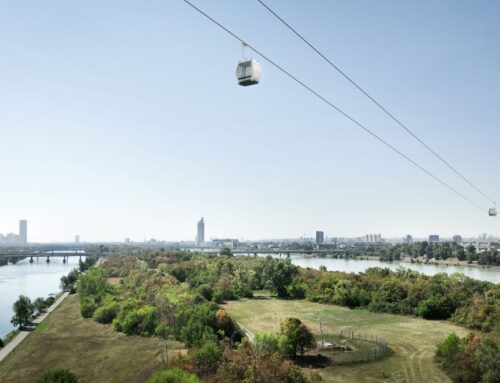
Cities, SI urban 2/2025, Tourism
Ujjain: urban cable car to the temple
Ujjain, the capital of the district of the same name in the Indian state of Madhya Pradesh, not only has 550,000 residents but also welcomes many pilgrims. Especially on religious holidays, thousands of worshippers make their way from the railway station to the Mahakaleshwar Temple.
Currently, the journey through the congested streets takes at least 25 to 30 minutes – a route that is both arduous and complicated.
64,000 passengers per day
To make the trip to the temple significantly more comfortable and convenient, the state-owned company NHLML (National Highway Logistics Management Limited) has commissioned a cable car: a 1.7- kilometer, eight-seater gondola lift with 55 cabins and a transport capacity of 2,000 people per hour in each direction.
The system is expected to carry 64,000 passengers per day. With a travel time of just seven minutes, the journey will be dramatically shortened. Moreover, the cable car ride will be far more comfortable and offer an excellent view of the city.
Elderly pilgrims and those with limited mobility will particularly benefit. Overall, the cable car aims to improve mobility for millions of people.
Valley station
The cable car starts at the railway station of Ujjain.
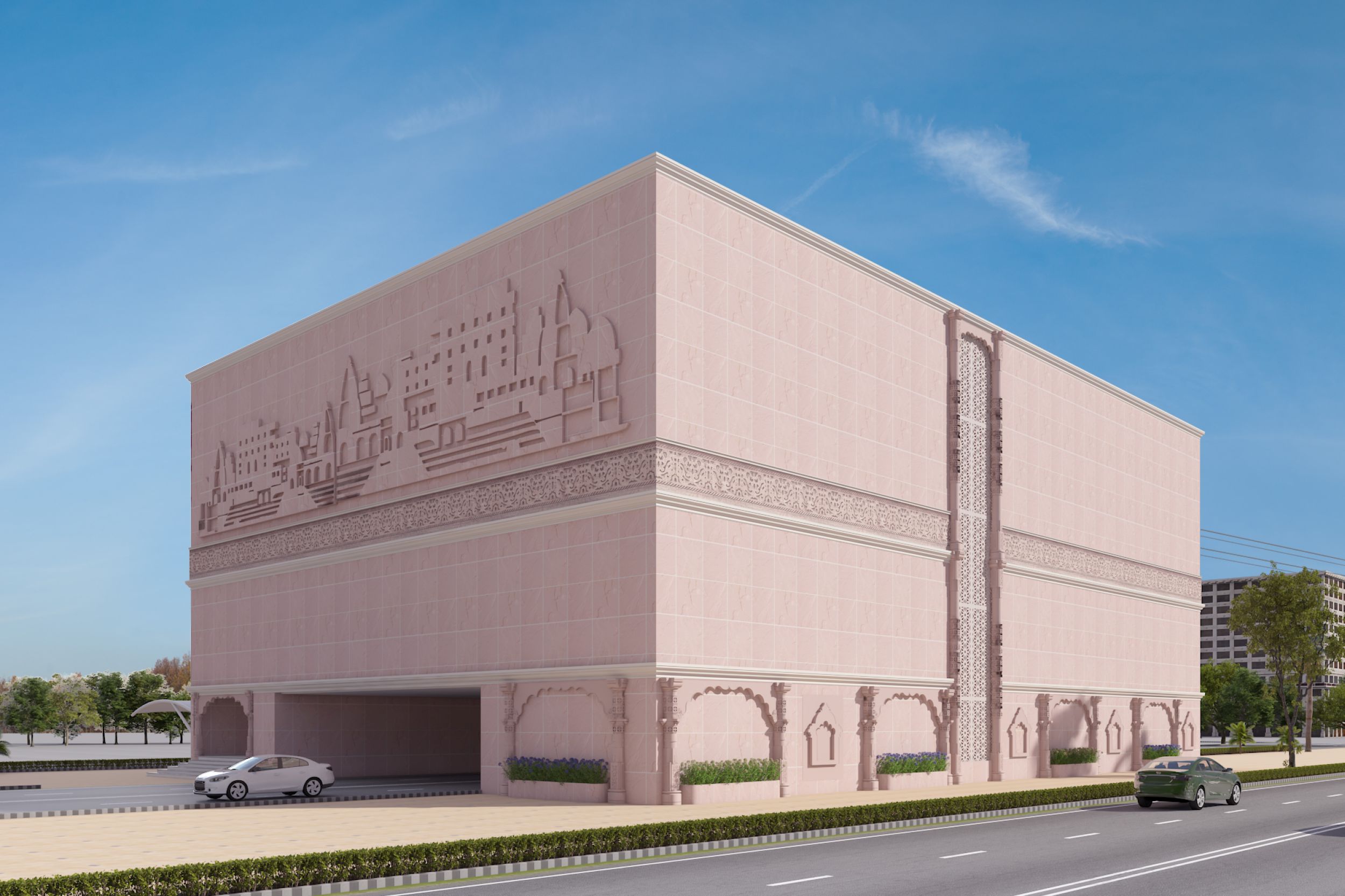
Intermediate station with a turn
The three stations – at Ujjain railway station, the Triveni Museum, and Ganesh Colony (temple) – are strategically placed to provide easy access for both locals and visitors.
The buildings not only house the cable car technology but also serve as local hubs featuring shops, waiting areas, restrooms, security checkpoints, and operational rooms.
Architecturally, the stations are designed to blend seamlessly with the cultural, religious, and urban environment. The intermediate station serves as a corner station, linking the cable car line toward the temple.
Build-and-operate model
The Indian construction company MSIL (Jai Makakaleshwar Ropeway Private Limited) will implement the cable car by the summer of 2026 and operate it until approximately 2031. The manufacturer DOPPELMAYR will supply the system.
After five years, NHLML is expected to take over operations – as stipulated by the national cable car plan for most such projects.
Upper station
The terminal station at the temple is to be attractively designed.
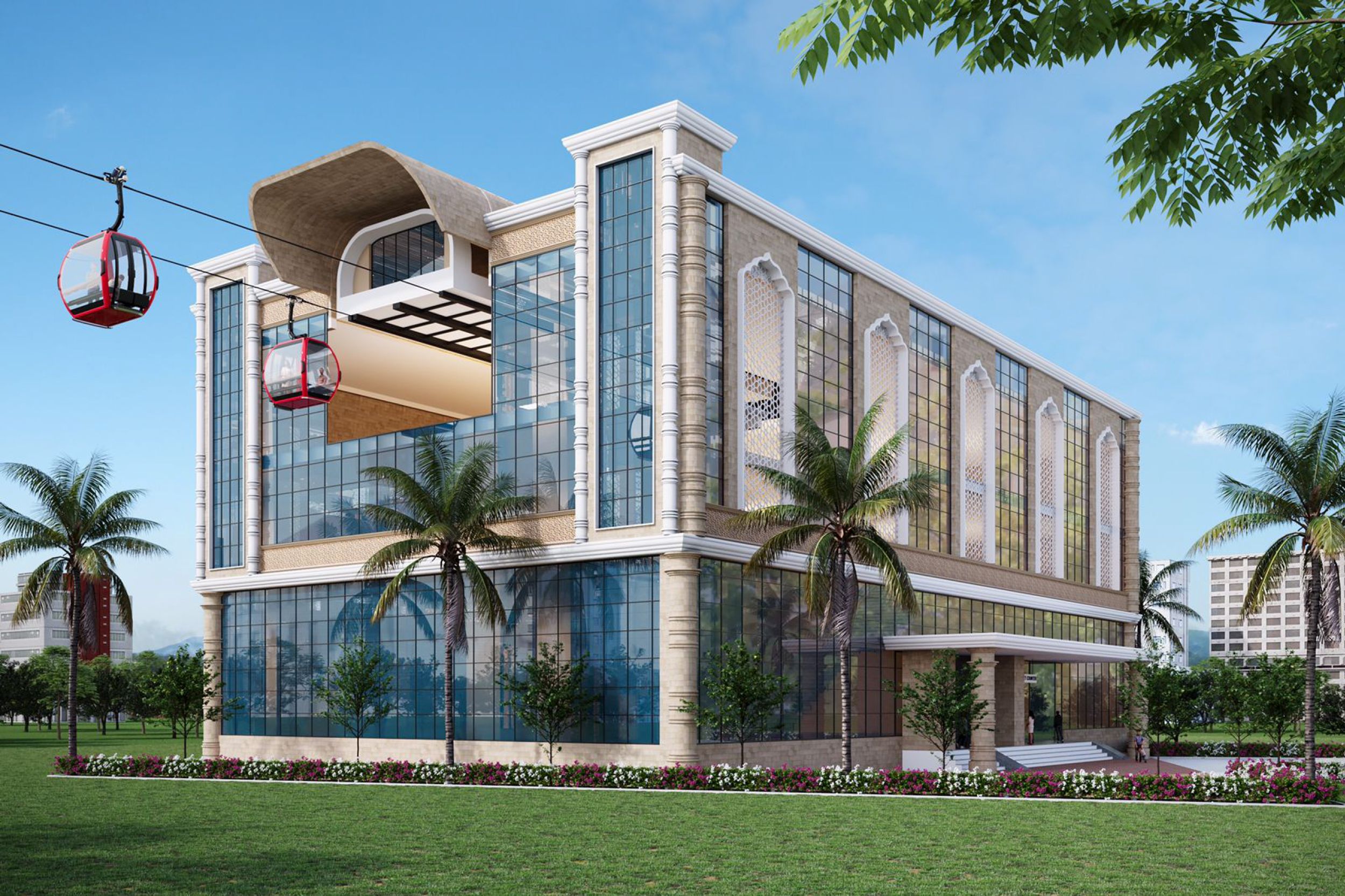
Independent supervision
The planning, construction, and operation of the cable car are being monitored by independent experts from SALZMANN Ingenieure and BERNARD Consult.
“Essentially, we represent NHLML in dealings with contractors: we manage the project, review plans and calculations, and ensure deadlines and quality standards are met,” explains cable car planner Stephan Salzmann.
While the BERNARD Group, with its Indian staff on site, focuses on transport planning, construction, and architecture, SALZMANN contributes its cable car expertise. In addition, an experienced urban cable car specialist from Colombia has been brought on board for the Ujjain project.
Technical Data
Cable Car Ujjain
| Capacity | 2,000 p/h/d |
| Length | 1.78 km |
| Speed | 6 m/s |
| Travel time | 7 min |
| Cabins | 55 |
| Cabin capacity | 8 p |
| Stations | 3 |
| Towers | 11 |
Well-acquainted engineers
Together with the BERNARD Group, the Austrian engineering firm SALZMANN has already supervised 14 projects for NHLML, seven of which are currently being implemented.
The most well-known is the urban cable car from BARTHOLET in Varanasi, which will soon go into operation. Other noteworthy projects include the planned aerial tramway in the million-strong city of Prayagraj (another of India’s seven holy cities) and the temple cable car in Kullu.
Additionally, on behalf of the state of Himachal Pradesh, the firms are developing an urban cable car network in Shimla with three lines. The joint venture is also working on 12 cable car projects for private clients across the subcontinent.
“Feasibility studies are also a major part of our work in India – we’ve already examined nearly 40 cases to assess whether urban cable cars are even viable,” emphasizes Stephan Salzmann.
With over 50 years of experience in alpine cable car construction (more than 400 projects to date), SALZMANN knows exactly what rope-based transport systems can achieve.
